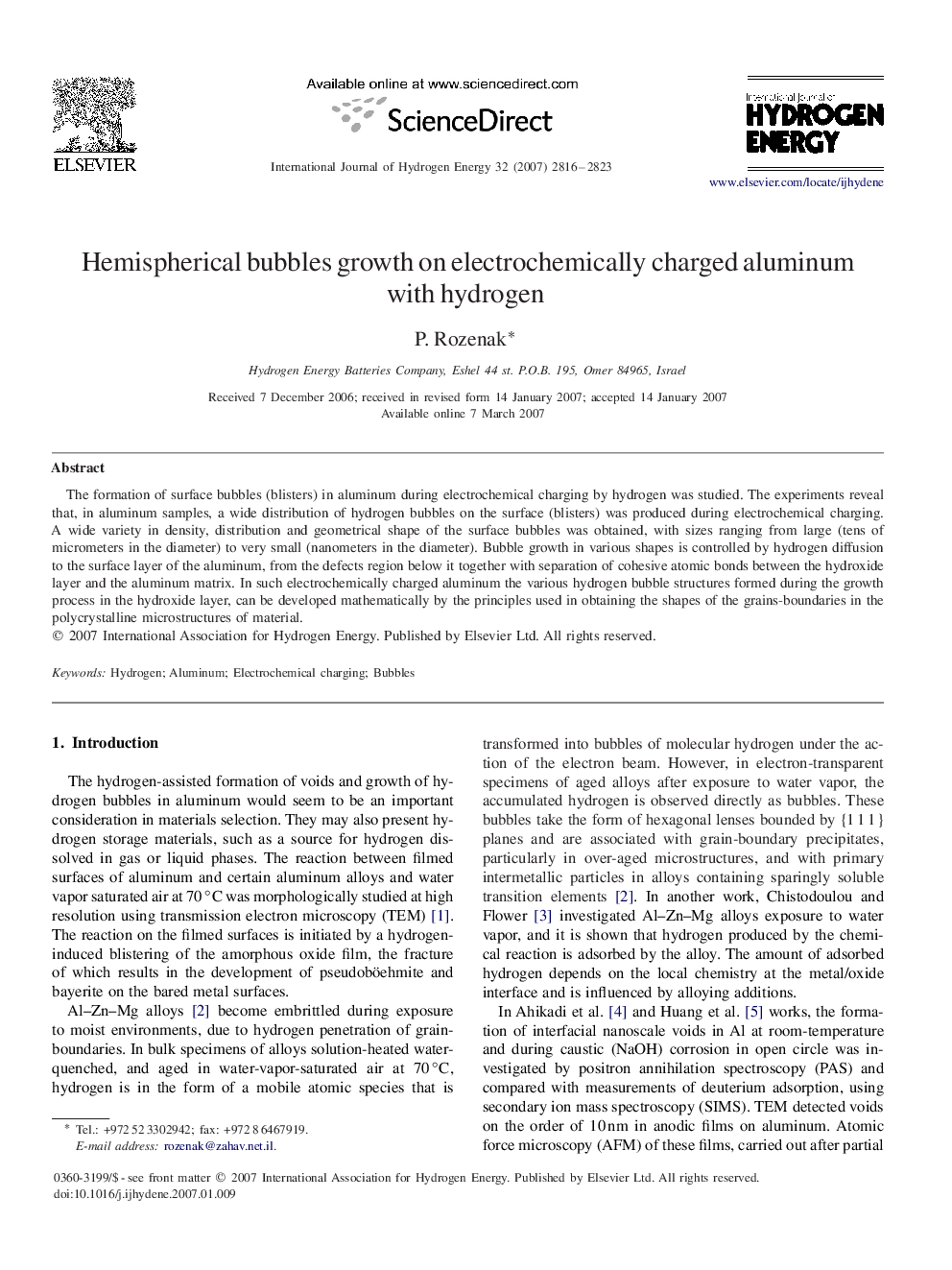| Article ID | Journal | Published Year | Pages | File Type |
|---|---|---|---|---|
| 1280181 | International Journal of Hydrogen Energy | 2007 | 8 Pages |
The formation of surface bubbles (blisters) in aluminum during electrochemical charging by hydrogen was studied. The experiments reveal that, in aluminum samples, a wide distribution of hydrogen bubbles on the surface (blisters) was produced during electrochemical charging. A wide variety in density, distribution and geometrical shape of the surface bubbles was obtained, with sizes ranging from large (tens of micrometers in the diameter) to very small (nanometers in the diameter). Bubble growth in various shapes is controlled by hydrogen diffusion to the surface layer of the aluminum, from the defects region below it together with separation of cohesive atomic bonds between the hydroxide layer and the aluminum matrix. In such electrochemically charged aluminum the various hydrogen bubble structures formed during the growth process in the hydroxide layer, can be developed mathematically by the principles used in obtaining the shapes of the grains-boundaries in the polycrystalline microstructures of material.
